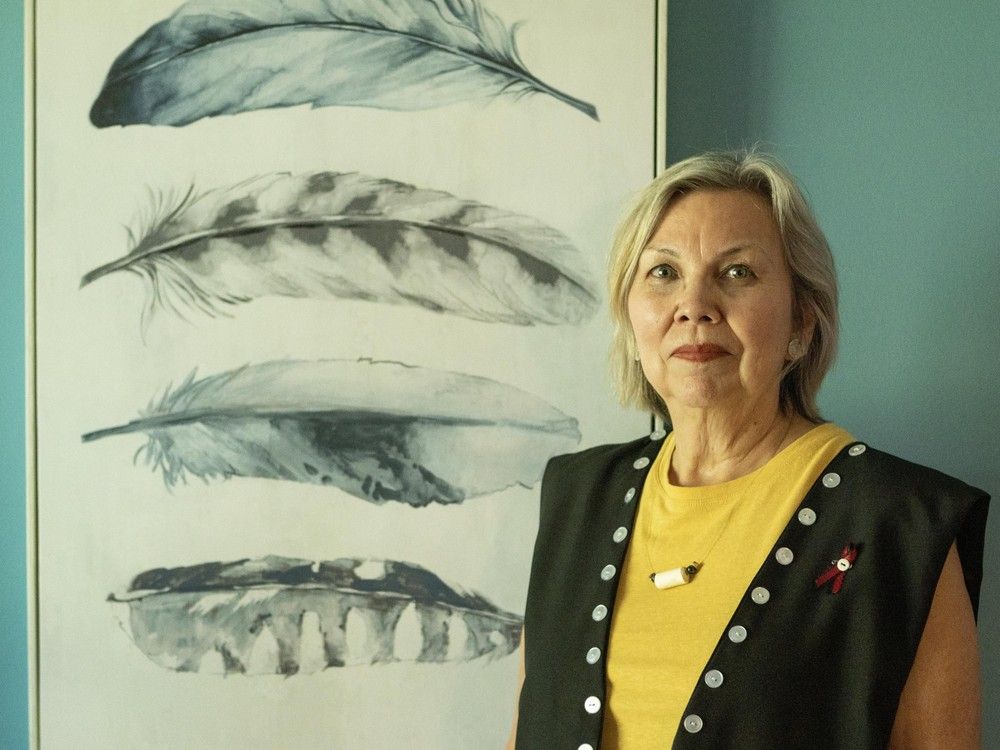
On July 1, Gitxsan hereditary Chief Simoogit Geel is thinking about the land, and about Ayook , the Gitxsan system of laws governing their people’s relationship with each other and with the land.
The chief, also known as Catherine Blackstock, is thinking about the health of her Wilp, or house, and the salmon, the forests, the minerals and wildlife on her nation’s ancestral territories.
She is also thinking of the recent provincial decision to allow the Prince Rupert Gas Transmission pipeline to go ahead without renewing its expired environmental certificate or requiring consultation with First Nations.
The proposed pipeline would transport natural gas from northeastern B.C. to a liquefied natural gas facility on the west coast, cutting through 50 kilometres of Gitanyow territory.
Although an agreement with the Gitxsan nations has been in place since 2013, the American-backed project has raised controversy and legal challenges over its environmental impact.
Its 11-year-old environmental certificate expired last fall.
On June 10, the Union of B.C. Indian Chiefs, led by Grand Chief Philip Stewart, condemned the decision to move the pipeline ahead without engaging in consultation: “Once again, it feels like we are headed into a long, hot summer.”
“We don’t want to see a repeat of what happened with the Wet’suwet’en, with the armed police invading their pointing guns at people,” said Geel. “No injunctions.”
By respecting the traditional process of Ayook , and engaging in dialogue with the Gitxsan, Geel believes that could be avoided.
“We want to work on things as they come up,” said Geel.
In 2024, Gitxsan hereditary chiefs called for the resignation of B.C. Supreme Court Chief Justice Leonard Marchand Jr., for allowing industries to use B.C. courts to obtain injunctions that lead to enforcement by the RCMP on Gitxsan territory.
Geel, and 11 other hereditary Gitxsan chiefs launched an awareness campaign this week to highlight traditional Gitxsan Ayook, or laws, and their essential role in guiding responsible land development and economic growth on Gitxsan Laxyip, or traditional land.
The Gitxsan Nation covers about 35,000 square kilometres in northwestern B.C. including the Hazelton area in the watersheds of the upper Skeena and Nass River region. Its communities include the Kispiox, Glen Vowell, Kitwanga, Kitwankool and Gitsegukla.
“As a hereditary chief, I have a responsibility to take care of the land. We have our own system. We have our own laws,” said Geel.
“The industries are pretty good and knowledgeable about knowing who they should come to, and who they should talk to, but we need more respect from the government,” said Geel.
The B.C. NDP’s new fast-track law, which gives the provincial government broad power to override regulatory hurdles, has raised concerns.
“We still stand by our authority,” said Geel. “ You can’t push something through without us.”
While the original pipeline agreement is still in place, Geel said it needs to be revisited since so much time has passed. “We do have to consider there have to be potential impacts and turn over every stone to address any concerns.”
Respect for the Gitxsan traditions and culture means conversations with each of the wilps, or house groups, of the nation, each of which holds the responsibility of preserving the sanctity and safety of their traditional territories.
“We are matrilineal, so how you receive your lineage is through your mother,” said Geel. The head chief of each Wilp has the authority over a specific piece of land, but works with other chiefs and community members to come to a decision.
“If you belong to a house or wilp and that house is tied to a piece of land and the land you use to sustain yourself and have a concern about what is happening, they need to come to me and talk to the Wilp and work things through.”
Paramount is preserving the sanctity of the process, respecting the voice of each Wilp .
The system, with its guiding principle of Ayook , has worked since time immemorial, said Geel, who emphasized that land management decisions are based on traditional knowledge combined with science.
“We were asked to take care of the land, and each of us take it very seriously.”